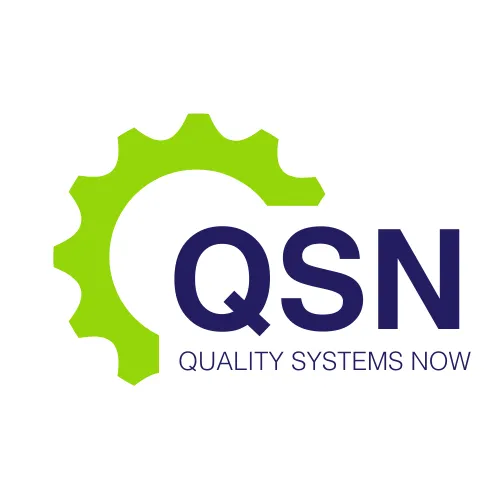LATEST NEWS

Updates on TGA Public Consultation for GMP Guidelines
The Therapeutic Goods Administration (TGA) has issued a call for public input on forthcoming updates to Good Manufacturing Practice (GMP) guidelines. These revisions—developed collaboratively by the Pharmaceutical Inspection Co-operation Scheme (PIC/S), the European Medicines Agency Inspectors Working Group, and with input from the TGA—reflect the rapid integration of modern digital and artificial intelligence (AI) technologies in the manufacture of therapeutic goods. This article examines the scope, significance, and implications of the updated GMP framework for manufacturers, testing laboratories, and biotechnology firms. It is presented in a scientific style for Quality Systems Now, GMP and regulatory compliance specialists serving therapeutic goods entities.
Scope and Rationale for the Consultation
As digital technologies and AI increasingly influence medicinal product manufacturing, existing GMP guidelines require modernization to remain aligned with contemporary industry practices and risk landscapes. The proposed revisions encompass substantial amendments to existing documentation standards and systems as well as the introduction of a novel annex explicitly addressing AI.
These updates are vital because the PIC/S Guide to GMP underpins Australia’s legal framework for manufacturing therapeutic goods, including active pharmaceutical ingredients (APIs) and sunscreens. Any changes to this guide therefore have direct regulatory impact. Notably, the existing GMP obligations do not extend to blood products, some cell therapies, or biologicals derived from live animals. The public consultation opens an opportunity for industry stakeholders to help shape the guidance and ensure its continued relevance.
Consultation Process and Timeline
The public consultation has been officially opened and will remain available for submissions until October 7, 2025. Stakeholder organisations are encouraged to channel feedback through their representative bodies, while direct submissions can also be made via a specified survey mechanism. Importantly, submissions must be submitted through that external survey system and not submitted directly to the TGA.
The TGA’s consultation process fosters inclusive input from manufacturers and sponsors, enabling input on definitions, operational expectations, and implementation approaches for advanced technologies. This inclusive approach helps ensure the regulatory framework evolves in synchrony with industry innovation and maintains practical applicability.
Summary of Proposed GMP Guideline Updates
Three principal updates to the GMP guide have been proposed:
Revisions to Chapter 4 – Documentation
The revised chapter is intended to reflect digital recordkeeping, e-documentation, and data integrity protocols, which are essential to ensuring transparency and traceability in contemporary manufacturing environments.Revisions to Annex 11 – Computerised Systems
With the increasing prevalence of automated data systems, electronic batch records, and digital control systems, the updated annex addresses validation, security, and change-control considerations fit for complex computing environments.Introduction of Annex 22 – Artificial Intelligence
The newly proposed annex positions AI as a core component of modern manufacturing and seeks to establish foundational expectations for AI use, risk management, and compliance within GMP frameworks.
These updates aim to harmonise GMP guidance with technological evolution and address gaps that digital transformations have revealed.
Importance for Australian Manufacturers
Australia incorporates the PIC/S Guide to GMP into domestic law through the Therapeutic Goods Act 1989. As such, updates to the guide have legal effect and must be integrated into quality systems and compliance monitoring. Manufacturers of APIs and sunscreens face immediate regulatory relevance, whereas other categories—such as blood products and certain biotherapies—are governed under alternate codes.
The proposed changes underscore the need for manufacturers to pre-emptively evaluate their documentation systems, IT infrastructures, and AI pathways. Compliance planning must now account for digital validation protocols, cyber-security considerations, and the governance of decision-making performed by AI systems that may impact product quality or safety.
Implications for Quality Systems Now Clients
Manufacturers, biotechnology firms, and testing laboratories supported by Quality Systems Now should consider several strategic actions:
Review Documentation Systems: Ensure that existing documentation protocols align with the anticipated requirements for electronic records, audit trails, and data integrity introduced in the revised Chapter 4.
Assess and Strengthen Computerised Systems: Evaluate current IT systems in light of updated Annex 11 expectations—particularly validation practices, access controls, and audit readiness.
Prepare AI Governance Frameworks: If AI tools are used or planned, structure governance and risk management frameworks that would satisfy the forthcoming Annex 22 requirements.
Participate in the Consultation: Engage with stakeholder organisations to voice practical insights and concerns, or submit feedback directly via the survey tool prior to the October 7 deadline.
Align with Transition Plans: Should the updates be adopted, align implementation efforts with TGA guidance timelines to ensure seamless compliance integration without operational disruption.
Broader Regulatory and Industry Context
These GMP updates reflect broader trends in regulatory modernization. Earlier TGA reforms—such as adopting the 2022 PIC/S Guide to GMP version (PE009-16)—encompassed new annexes relevant to investigational products and authorised persons for batch release, and introduced enhancements to Annex 13 and Annex 16. Transition provisions allowed industry time to adapt, reflecting the TGA’s historically consultative approach. The current AI-focused updates maintain that adaptive regulatory philosophy, ensuring guidelines keep pace with rapidly changing technological environments.
Moreover, the consultation underscores the enduring importance of international harmonisation. As Australia aligns with PIC/S and European GMP standards, updates provide consistency for manufacturers operating across global markets. This alignment supports harmonised inspections, mutual recognition of standards, and streamlined global compliance.
Conclusion
The TGA’s current public consultation on proposed GMP updates is both timely and vital. It represents a scientifically and methodologically rigorous effort to integrate modern digital and AI technologies into the regulatory fabric of medicine manufacturing. Proposed revisions to Chapter 4 and Annex 11, and the newly introduced Annex 22 on AI, respond to digital realities shaping process control, recordkeeping, and governance. For manufacturers influenced by these guidelines, active engagement is essential to safeguard compliance and operational continuity.
Quality Systems Now is well-placed to guide clients through this regulatory evolution—offering clarity, preparedness planning, and strategic compliance support. With the consultation window open until 7 October 2025, industry input now can shape the future of GMP regulation to better reflect technological advances and uphold patient safety.
